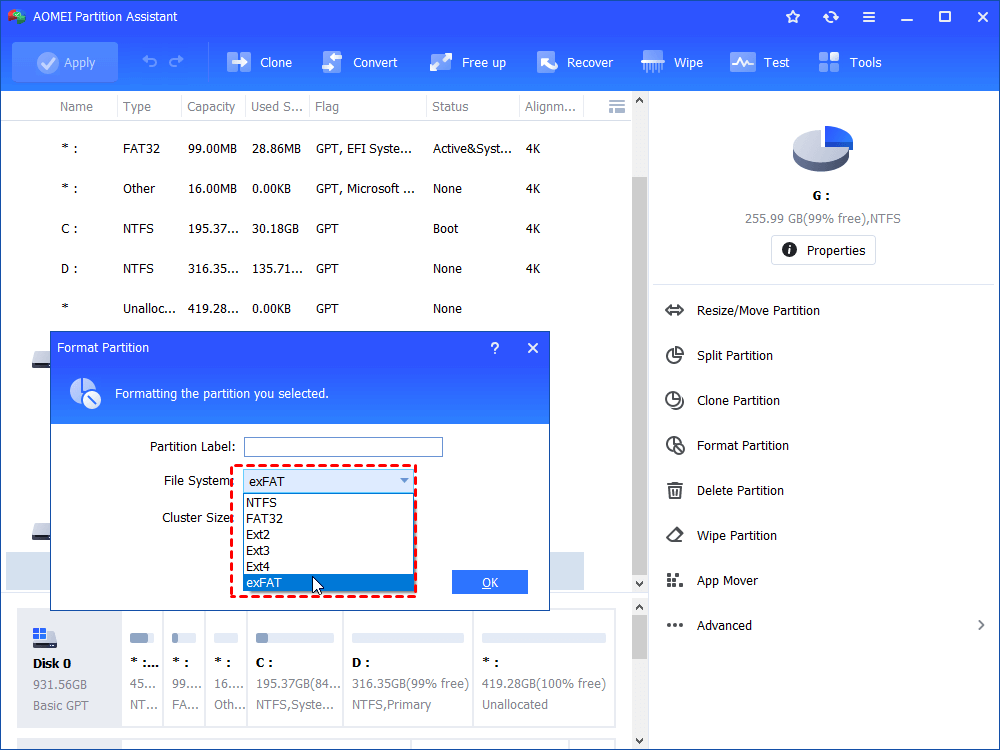

- #Format a hd for mac how to#
- #Format a hd for mac for mac#
- #Format a hd for mac mac os#
- #Format a hd for mac install#
Quit Disk Utility to return to the utilities window.After the erase is done, select any other internal volumes in the sidebar, then click the delete volume (–) button in the toolbar to delete that volume.ĭuring this step, disregard any internal volume named Macintosh HD or Macintosh HD - Data, as well as any volumes in the External and Disk Images sections of the sidebar.If you don't see this button, click Erase instead.
#Format a hd for mac mac os#

#Format a hd for mac install#
To guarantee an effective data recovery without spending money to no avail, you can install the Mac data recovery free version for the first trial.
#Format a hd for mac for mac#
For Mac users, it only takes a few clicks for the software to scan and display the formatted data. If you don't, you can count on data recovery software to retrieve the lost data.ĮaseUS Data Recovery Wizard has both Windows and Mac versions, so it's a good choice for data recovery, no matter you're using a PC or Mac.
#Format a hd for mac how to#
Bonus Tip: How to Recover Data from Formatted USBįormatting the USB would erase the data on it completely, so please make sure that you have a backup. After this, you can type " diskutil list" in the command again to check if the formatting has been successful.

Connect the USB flash drive to your Mac computer. To format FAT32 on Mac with Terminal, follow the next steps: If you are using a Mac, you can run the built-in Disk Utility to quickly format a hard drive or external hard drive under Mac OS. For Windows, it offers quick format feature when you right-click the hard drive on the computer. Again, create a backup before taking this action. Both Windows and Mac OS offer built-in disk formatting tool. The command-line behavior does the same way to erase data with the Disk Utility. Wait for the process to complete, then you'll get an empty new USB flash drive with FAT32 as the file system. Choose the format as MS-DOS (FAT) for Format, Master Boot Record for Scheme. Select your USB flash drive on the sidebar, choose Erase. Go to Applications > Utilities > Double click and open Disk Utility. Connect the USB flash drive to your Mac computer. To format the USB drive to FAT32, follow the next steps: To format USB to FAT32 with Disk Utility will erase all data on the flash drive, so before you doing so, please do remember to check whether you have saved useful data to another secure device in advance. Below are the detailed steps of the FAT32 format with both methods. So, if users anticipate using the flash drive with more than one operating system, they will definitely benefit from the FAT32 file system. For Apple Mac users, there are two ways to format a USB flash drive to FAT32, namely Disk Utility and Terminal command line.

It's a universal format that is compatible with Mac OS X/macOS, Windows, Linux, and DOS systems. Compare with the other commonly used NTFS file system on a flash drive, FAT32 has a compatibility advantage across many operating systems. How to Format a USB Flash Drive with Mac to FAT32Ĭomputer users who use a USB might have the demand for formatting it to the FAT32 file system. If you lost data due to formatting, run EaseUS file recovery software > Scan and recover formatted data. Full stepsĬonnect USB to Mac > Hit cmd + space keys > Type terminal and hit Enter. Connect USB to Mac > Go to Applications > Utilities > Disk Utility > Select USB and click "Erase".


 0 kommentar(er)
0 kommentar(er)
